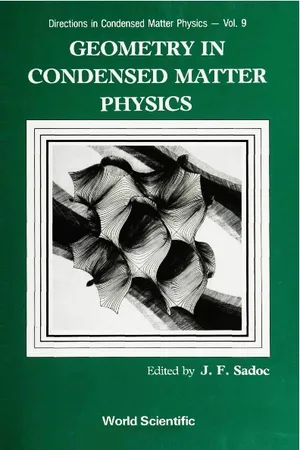
- 300 pages
- English
- PDF
- Available on iOS & Android
Geometry In Condensed Matter Physics
About this book
The subject of geometry has become an important ingredient in condensed matter physics. It appears not only to describe, but also to explain structures and their properties. There are two aspects to using geometry: the visual and intuitive understanding, which fosters an immediate grasp of the objects one studies, and the abstract tendency so well developed in the Riemannian manifold theory. Both aspects contribute to the same understanding when they are applied to the main problems occurring in condensed matter sciences. Sophisticated structures found in nature appear naturally as the result of simple constraints which are presented in geometrical terms. Blue phases, amorphous and glassy materials, Frank and Kasper Metals, quasi-crystals are approached in their complexity, using the simple principles of geometry. The relation between biology and liquid crystal sciences, the physics of membranes is a fundamental aspect presented in this book.
Frequently asked questions
- Essential is ideal for learners and professionals who enjoy exploring a wide range of subjects. Access the Essential Library with 800,000+ trusted titles and best-sellers across business, personal growth, and the humanities. Includes unlimited reading time and Standard Read Aloud voice.
- Complete: Perfect for advanced learners and researchers needing full, unrestricted access. Unlock 1.4M+ books across hundreds of subjects, including academic and specialized titles. The Complete Plan also includes advanced features like Premium Read Aloud and Research Assistant.
Please note we cannot support devices running on iOS 13 and Android 7 or earlier. Learn more about using the app.
Information
Table of contents
- CONTENTS
- FOREWORD
- PREFACE
- Chapter I GAUGE THEORY AND GEOMETRY OF CONDENSED MATTER
- Chapter II MORPHOLOGY OF STRATIFIED FLUIDS
- Chapter III WHICH UNIVERSE FOR BLUE PHASE
- Chapter IV GEOMETRY AND TOPOLOGY OF CELL MEMBRANES
- Chapter V NON-CRYSTALLINE ATOMIC STRUCTURES: FROM GLASSES TO QUASICRYSTALS